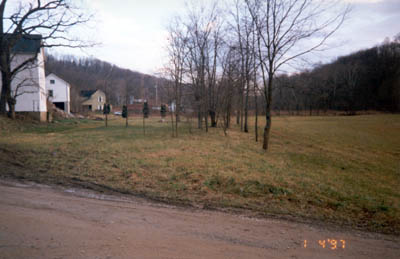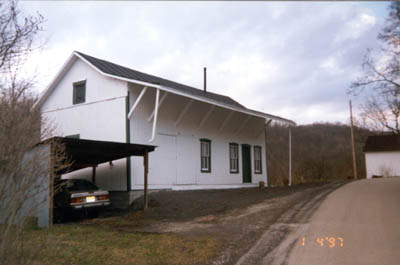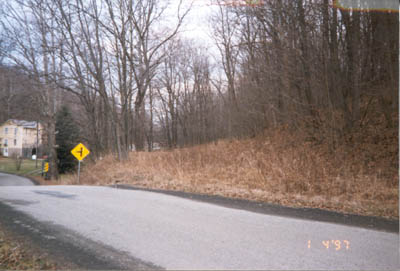|
|
|||
|
Welcome to the section of this site dedicated to the legacy of the Waynesburg and Washington Railroad. Right now, this site is in existence because I wanted to show how Greene County grew because of its first railroad. By missing the western parts of the county, it continued to keep that portion hidden from progress. The east had already grown from the river and the railroad supported the central section. Its beginnings were started because of the boom in oil and gas. Coal was already being mined on the eastern end of the county near the river. This railroad helped all the natural resource industries to grow and caused the increase in population in Waynesburg. Though the railroad barely merits one picture in the Waynesburg: Prosperous and Beautiful book, without it the book itself would not have existed. I would not dream of being an expert on the Waynesburg and Washington. There was a book that was published called Three Feet on the Panhandle by Larry Koehler and Morgan Gayvert that provides a much more detailed history than can be presented here. And if I have violated any sort of copyrights, please let me know, because I wouldn't dream of doing such a thing. However, the book is not being published anymore and the book is a scarcity. There is only one issue in Bowlby Library in Waynesburg. I felt that more people should know about the railroad and this seems to be the surest way to do it. The pictures on this page are all copyright Aaron A. Marcavitch 1997. All information contained below is paraphrased and taken from Three Feet on the Panhandle. There is now a group working to preserve and interpret the remaining locomotive from this railroad. They are doing some hero's work. You can find them at www.narrowtracks.com under WWRR. |
|||
|
History | Poems | Greene County Stations | Washington County Stations | Memories | Conclusion |
|||
|
These are a few new images I have posted for the right of way for the WWRR. Enjoy! |
|||
 |
 |
 |
 |
 |
 |
 |
 |
 |
These images are as follows: 1.) The approach to Washington. Rails still present. 2.) Crossing near Braddock. Rails and other bits still present. 3. & 4.) Braddock Trestle. One of the most complete portions of the railbed. 5.) Bridge near Judge Chambers stop. 6.) Bridge parts still left near Hackney (close to Boy Scout Camp). 7.) Dunn Station site. Some parts still left. The trestle bents are still in the woods. 8.) Stone rests where Swarts station once stood. Station moved to roadside. 9.) Bridge abutments in Greene Co. 10.) Ties in woods near Union Station (behind church). |
|
|
|
The Waynesburg and Washington
Railroad ran between the county seats of Washington and
Greene Counties. It was first conceived by John Day in
1874. The charter was signed in 1875 and work began in
August of that year. It was to be a three foot narrow
gauge line, because of the current inclination toward the
building of those (This picture shows the three foot spaced trees showing the main line's former roadbed. It was taken at Swarts. The former station is the white building with two windows.)The line had fallen by the wayside around the time of the Great Depression. Passenger service was decided to be canceled on July 9, 1929. There were rail truck services to the towns along the line until 1976, when the ownership passed to Conrail. The line is now used up for a portion as a rail link to a local coal mine. The other portions of the line are now abandoned. There appears to be no interest in doing anything with the right-of-way. However the charter for the line has somewhere around eight centuries before it runs out. |
|
The line itself ran in crazy horseshoes and prompted many who rode the line to say that the "Waynie" had been designed by a snake. There were two poems written about the line in the late eighteen hundreds. In all my travels on the wide, wide earth Another poet wrote: It wriggles in and it wriggles out The line stretched out for twenty eight miles (who knows how long if it were straightened!). Horseshoe Curve, named for the more famous one near Altoona, was an astounding 35 degrees, or 164 feet radius. The line rose from 900 feet above sea level at Waynesburg, the low point, to just above 1400 feet above sea level at Summit about four miles south of Washington. There were points where locomotives had a climb of 200 feet in less than two miles. This combination made for travel on the line quite grueling. Because of both of these facts there were never any locomotives with greater than six driving wheels. There were Moguls on the line in later times, but these had to have the center drivers blind. This made for an interesting rolling stock and mainline. The following is a short summary of each station in Greene County and also a list of those in Washington County. |
|
Waynesburg was the southern terminus. This was the main yard for the line and had a roundhouse, turntable, freight house, stockyard, all the associated yard structures for locomotives, and of course the station. The station was built in 1885 and the two track train shed was built in 1893. By 1904, the station had a long freight room, waiting room, ticket office, and the railroad's offices. An interesting account of the station is drawn from a book entitled More Fact and Folklore by John O' Hara. I beg forgiveness for unauthorized use of these passages. (Page 26-27) "In the summer, Friday was "drovers' day," when cattle were driven in to the stockyard to be loaded out at daylight Saturday for shipment to Pittsburgh. The cattle were driven in by men on foot and on horseback. Usually, the buyer drove a buggy. The cattle were easily controlled on the fenced country roads, but when they got into the urban area, with noisy traffic, the throbbing engine exhausts of the ice plant, Zahnizer's [A foundry-AM] and the feed mill, and open lawns, the cattle became frightened and were hard to manage. Another interesting facet is the arriving passengers. Again to More Fact and Folklore for this story. (Page 27) "The Downey House and the Walton House both had porters that met every train and shouted the name of their respective hotels. They toted luggage the several blocks uptown to the hotels. [Uptown is uphill for several blocks! - AM] When war broke, Company K would all pile into the coaches at the station to ride to Washington and then on to Pittsburgh. After the line started failing, the yard was torn up and the station was passed on to a local wool dealer and then to the county road department. The yard was completely gone by the 1980's, when I remember it, and the station was mostly falling apart. In the late eighties, the station was torn down and the site was left blank. Conrail now has an office and a siding in this spot. Not quite what it was, but at least it is still dedicated to railroading. The next station down the line was called Buchannon, or West Waynesburg. This was the location of the tin mill, now the livestock auction. This was as far as the line went for a time until the South Waynesburg station was completed. A small industrial complex surrounded the tin mill. The station was a simple Pennsylvania Railroad shelter, more or less like a bus stop shed. Rees' Mill Station was another simple stop. Very nearly nothing remains at this site. Sycamore Station was next. The station was a freight room, waiting room and wash house. It was interconnected by a platform with the general store. The site is much changed today, but there is a post office approximately where the station was located. Sycamore is a small town that has grown since the railroad first went through. Swarts Station is one of the few structures left
standing. The first picture is of the former location
of the Swarts Station. The picture here is of the
Swarts Station. It had a freight and
waiting Iams Station is still remaining, although its use is uncertain. This had two stories, the first was freight and waiting, while the second story had an uncertain use. The station here only served the surrounding farms and this is what the area still remains.
Deer Lick is shown in the second photograph. The grassy area across the road is where the station stood. The mainline passes from center point to horizon. Though nothing much is known about the station, it is above a small town that has not grown significantly over the years. West Union is a slightly bigger town and is at the top of the smaller of two summits. Here was a covered freight shelter and a small "telephone booth" of a station. Both were located below the West Union United Presbyterian Church, below the house across the road and in approximately the gravel parking lot respectively.
|
|
From here the line went into Washington County. Not to slight the county, but I only tend to focus on Greene County. The remaining stations were:
This picture shows Washington Station as it exists
now. It suffered a major fire and the roof was
replaced. A building supply dealer owns it and uses it
for storage. At one time there were glass canopies and
a fantastic clock. The line connected with the P.C.
& St. L.'s standard gauge line |
|
Once again, I would like to quote John O' Hara out of his Fact and Folklore book. This is pages 17 and 18. "It was, in fact, more than a railroad to most of its patrons. One story of the end of the railroad particularly touches me. On the last day of passenger operations, the Kiwanis Club had a farewell train from Waynesburg. One employee didn't go on that train, James Lazier Shull, a conductor of 26 years. He had brought the last train in at seven thirty and wanted no part of the fun for the last train out of Waynesburg. John O' Hara goes on to say: "He wanted no part of the hilarity and was actually walking from the west end of the station at the corner of Morris and First Streets as the last run special wa pulling past the old Adam Dryer Bakery building on First and starting around the curve at Richhill and First Streets into the thin glare of the fading sun.
|
|
The Waynie fell into decline because of economics and the Pennsylvania RR, the Penn Central, or Conrail never did anything to save it. Because of that a unique rail line has slipped to the way side. An unfortunate thing has happened and hopefully someone will come along to resurrect the line, perhaps as a tourist line. I know that there are many who remember this line, although they may be fewer now. At one time, the people "seemed to be a sense of ownership shared by all its patrons, even though its actually ownership....was part of the Pennsylvania Railroad System." (Fact and Folklore, John O' Hara--p16) I focused on the buildings more than anything else. That is because that is what I have studied. I have traveled the mainline and know every remaining structure and chunk of structure on the line. I hope to have more up here including pictures. If you have a specific nugget of information you would like to see, let me know. Or if you have one yourself, let me know also. You can now return to the main page. |



